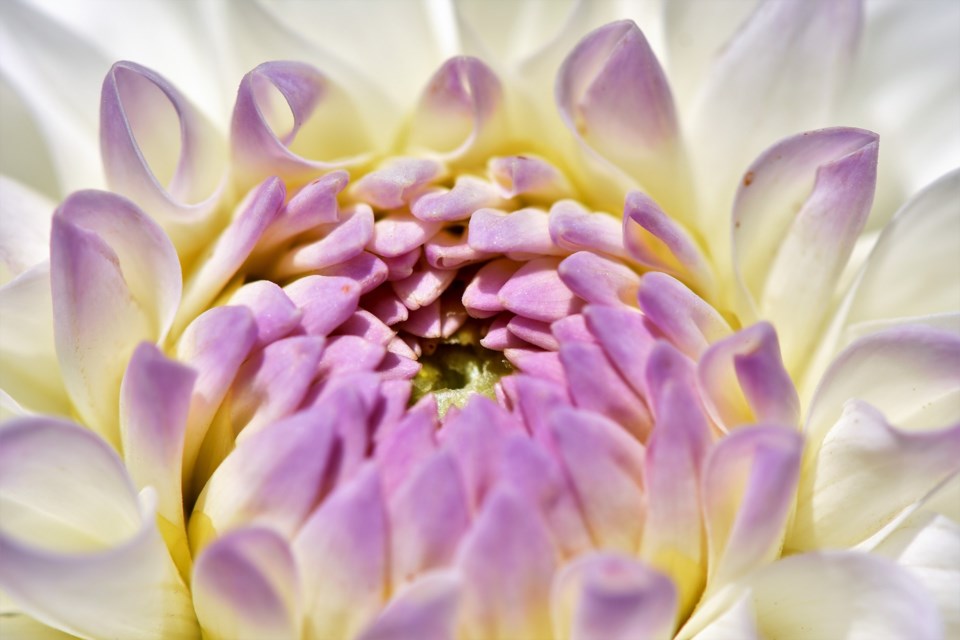Dahlias are the national flower of Mexico, where they originated. This perennial grows from tuberous roots which were grown for food by the Aztecs. As a food they were never introduced successfully elsewhere and declined in use locally after the Spanish conquest.
Dahlias range in size from one to five feet tall, with flowers ranging from two inch pompoms to dinner plate blooms. As long as they receive full sun, they can be grown in pots, planters or in the ground, but the tubers must be lifted for storage during the winter.
Wait until after the first frost to dig up the tubers. The foliage will turn brown, but at this stage the tubers will set “eyes” for next year’s growth. Dig up the tubers before the ground starts to freeze. Cut off the foliage and remove as much of the soil as possible without damaging the tubers. Remove all rotten and damaged tubers from the clump. It is a good idea to treat cuts and small wounds with sulfur dust. Allow the tubers to dry for a few days and remove any remaining dirt. You can divide them at this point, or you can wait until spring to divide them, if the clump is too big or you wish to multiply the dahlias. Make sure any division has at least one eye per tuber.
The tubers can be stored in barely damp vermiculite or peat moss. I have had the best success by storing them loosely wrapped in newspaper in a cardboard box in a cool, dry place.
Tuberous begonias originate from moist tropical to subtropical regions of the world, but do experience a dormant period. This allows for storage during the winter in our climate. Start decreasing the amount of water and stop fertilizing your begonias in late summer. After the first frost cut off the foliage leaving a couple of inches of each stem. Dig up the tuber and gently remove loose soil. Allow them to dry in a warm place for a few days.
Most experts recommend removing all the soil, roots and stems once they are dry, and placing each tuber in a separate paper bag. The bags are then stored in a box in a cool, dark place. I have had greater success leaving the roots and some soil on the tubers, and placing them upright on newspaper in a box once the soil is dry. I store the open box in a cool, dark place. Checking them after a couple of weeks, the remaining couple of inches of stems are easily removed. Which method works best likely depends on the humidity level in the storage area.




